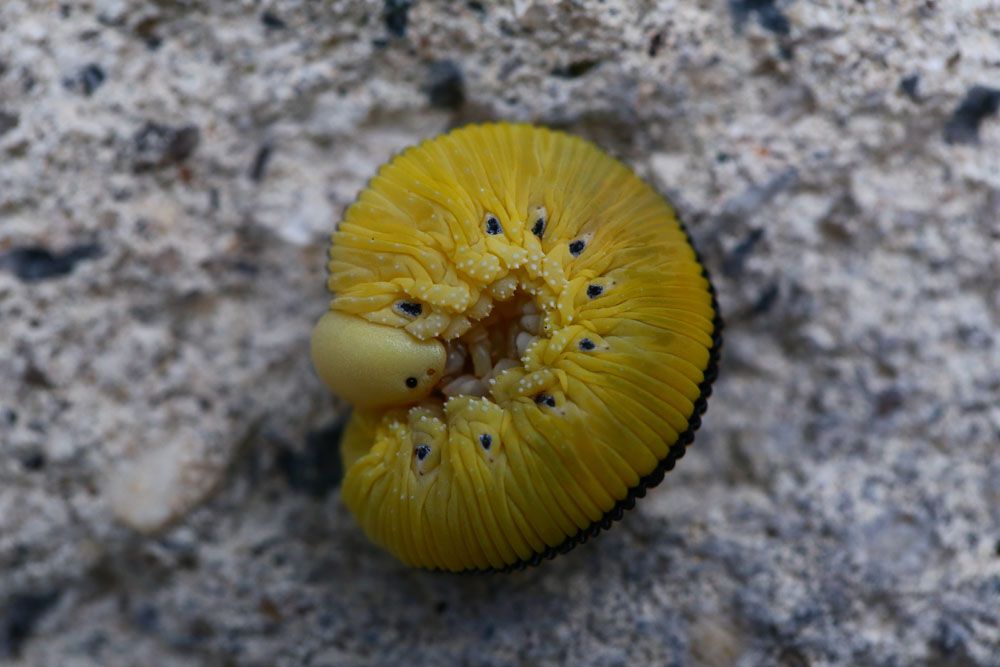
Elm Sawfly – Cimbex Americana
Elm Sawfly – Cimbex Americana
Common Name: Elm Sawfly
Latin Name: Cimbex Americana
Appearance:
The adult elm sawfly larva is a 2 ¼ inch -long creature that resembles a large yellow caterpillar with a black stripe along its back. It is, however, not even somewhat related to genuine caterpillars. Sawfly larvae have more than the five pairs of stubby abdominal limbs that most true caterpillars have, but the prologues lack the hook-like crochets found on caterpillar prolegs. Sawfly larvae typically have only one simple eye on each side of the head, unlike the six eyes found in caterpillars. Caterpillars grow into butterflies and moths. Sawfly larvae give birth to wasp-like insects. However, elm sawfly larvae and some real caterpillars eat on plants in the open.
Host plant:
The elm sawfly prefers elms and willows, although it has also been seen in alder, apple, basswood, birch, boxelder, ironwood, maple, plum, and poplar. Adults eat away the bark of stems to extract sap. The caterpillars eat the leaves.
Territory:
The species is native to North America and may be found from Newfoundland to Florida, westward to northern Texas, and northward to British Columbia, the Yukon, and Alaska.
Damages caused by Elm Sawfly:
Elm sawfly larvae damage crops, elms, and willows sporadically, especially in urban areas. They have also been observed feeding on the leaf of other tree species. Adult elm sawflies inflict harm by cutting gashes in the bark of minor limbs with their mandibles to feed on tree sap, resulting in girdling and death of the limbs.
Life history and Habits:
Adults appear from early May to mid-June, depending on latitude. Females deposit eggs in slits created in the undersurfaces of leaves after mating. Larvae hatch in 7-10 days and feed on leaves until late summer or early fall. Mature larvae fall to the ground and look for pupation sites amid the detritus at the foot of the host tree, where they spin cocoons and overwinter as prepupae (non-feeding larvae). Pupation normally occurs the following spring. However, some prepupae survive the second winter before pupating. Adults emerge around two weeks following pupation. Each year, there is only one generation.
